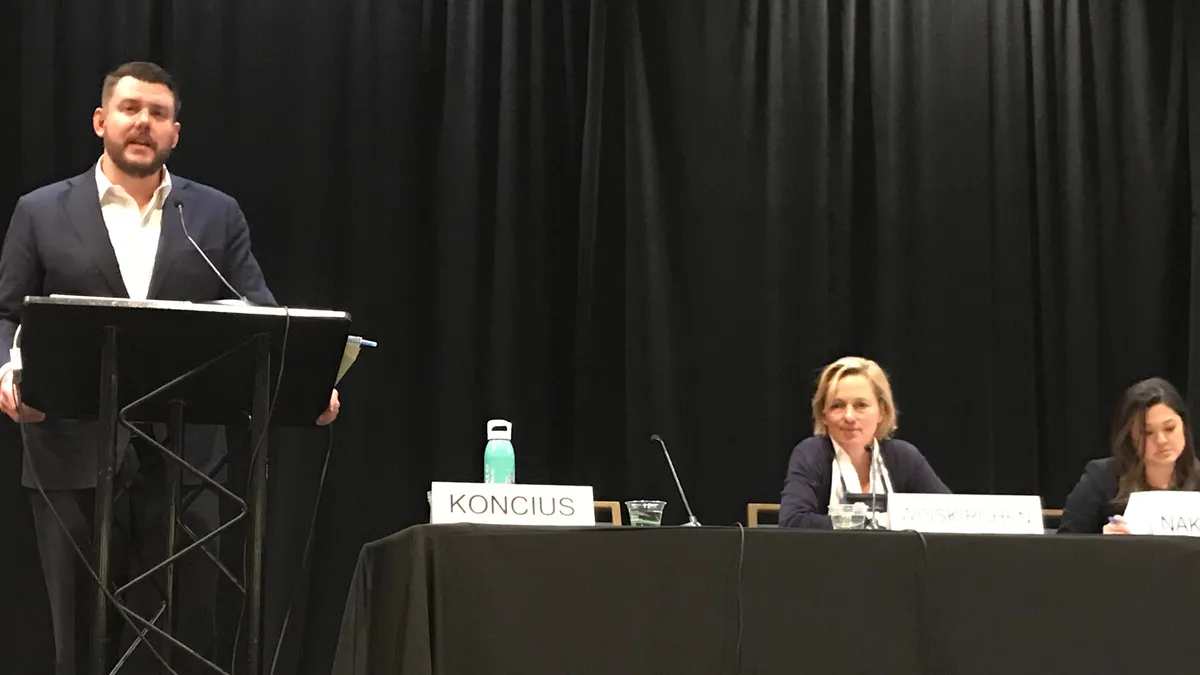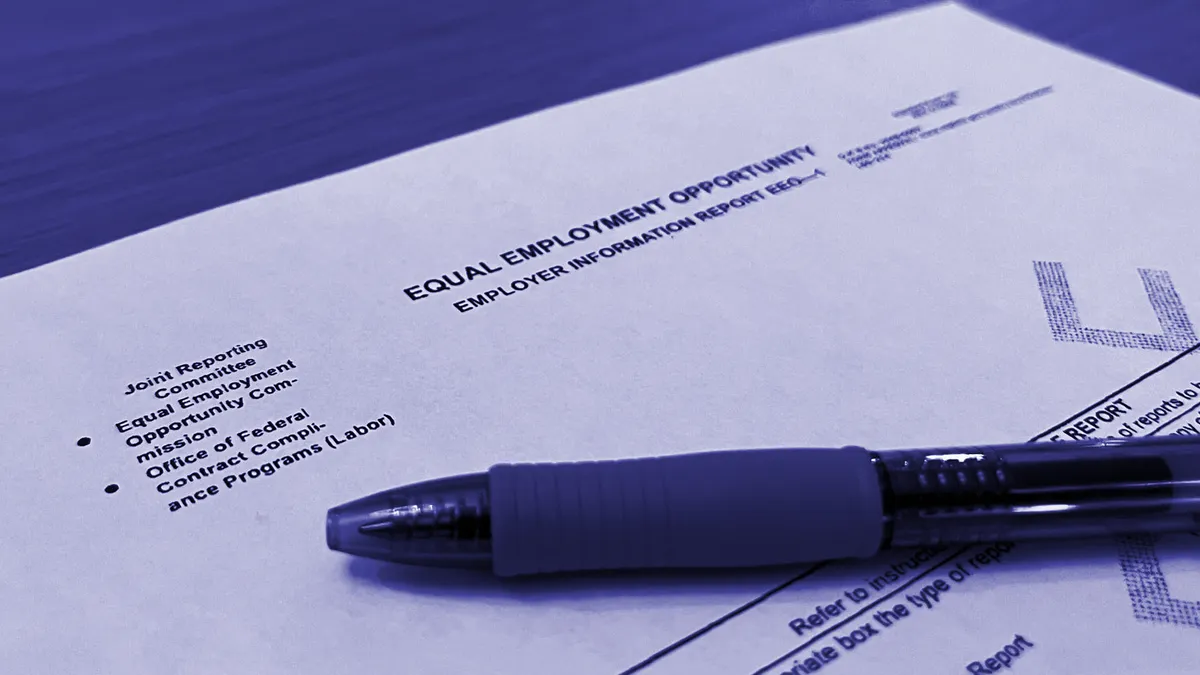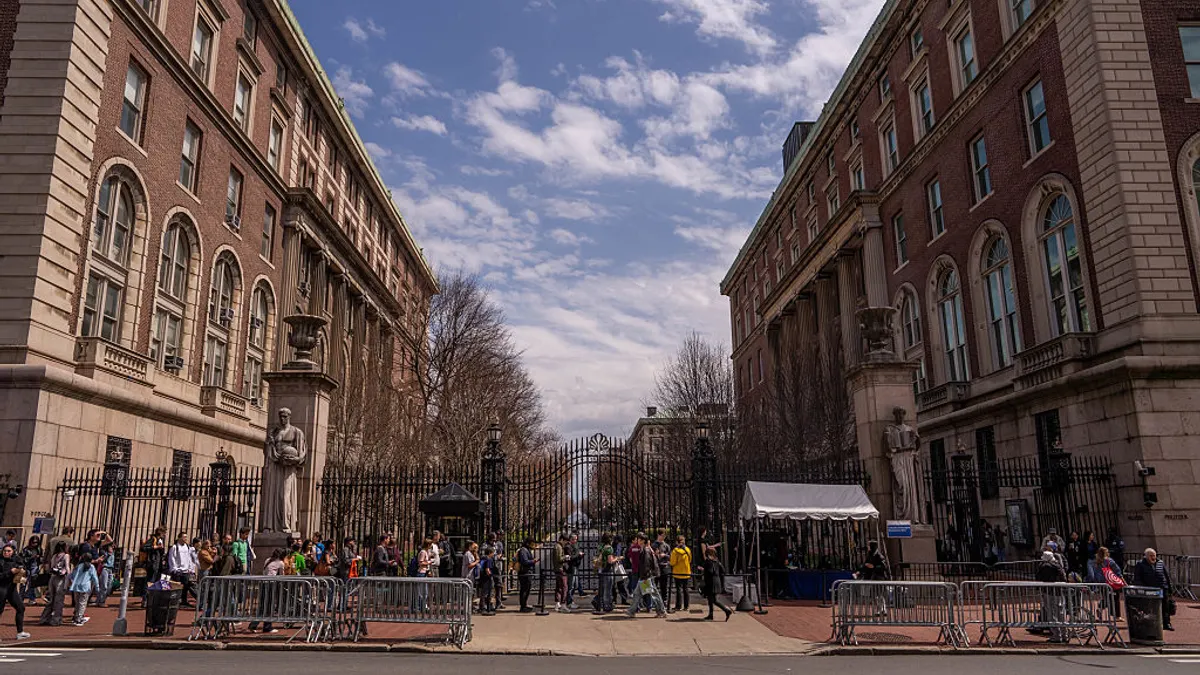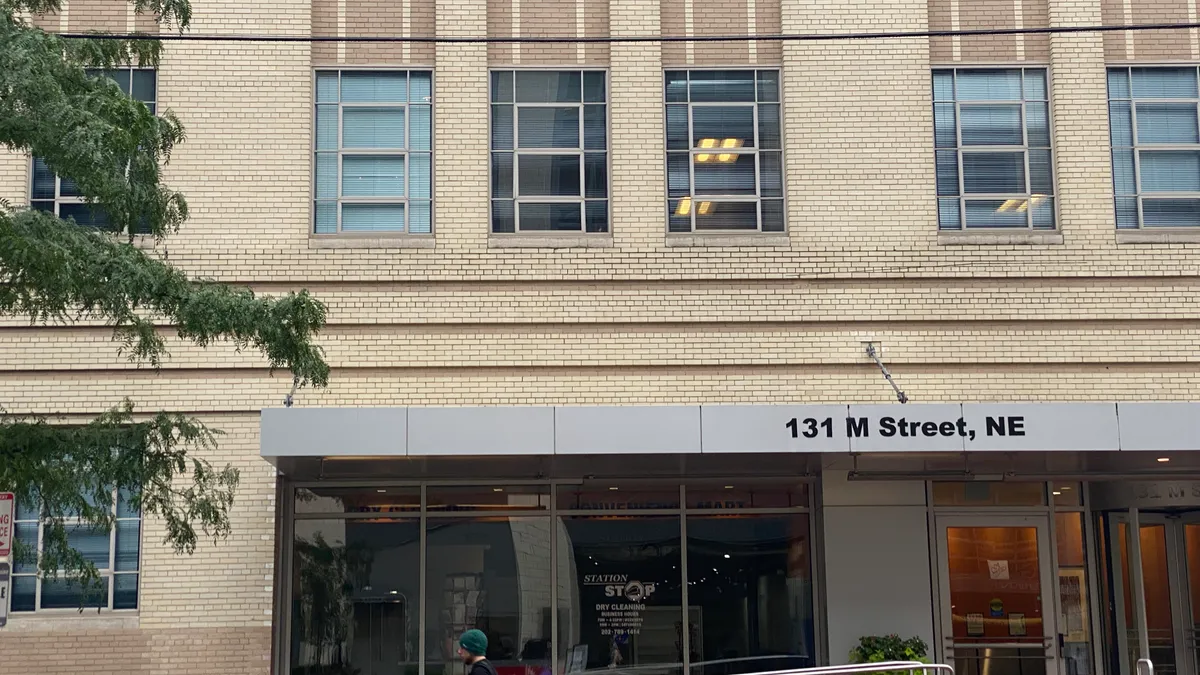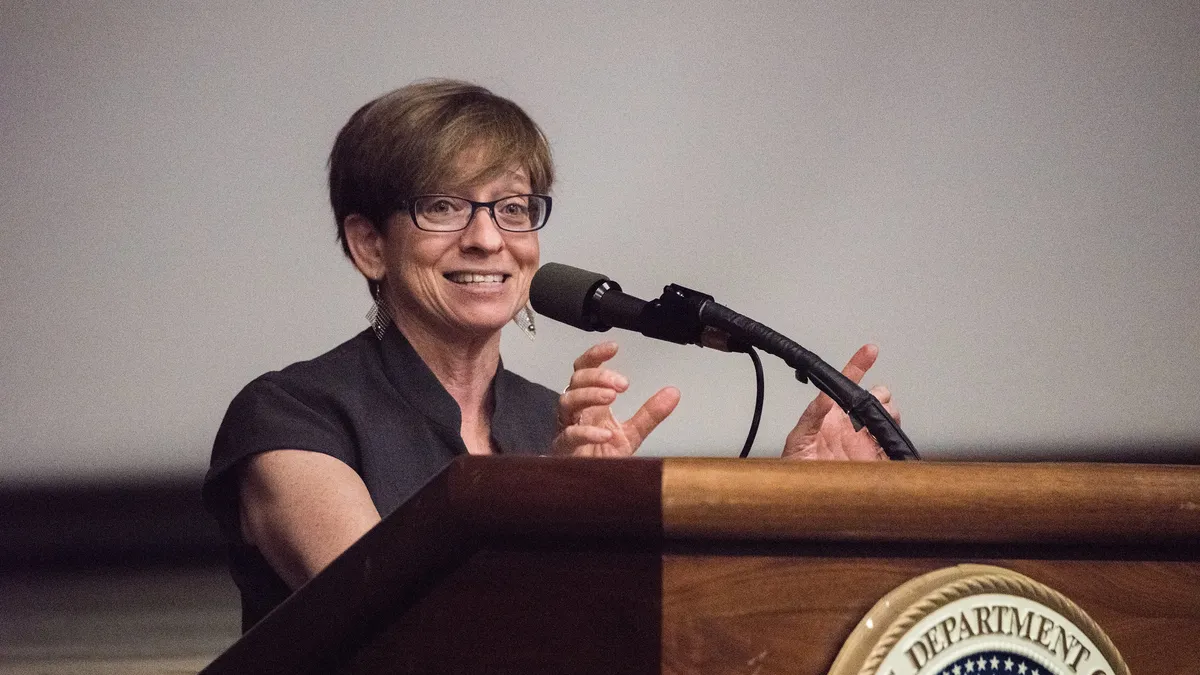SAN FRANCISCO — Economists have long warned about the rise of technologies that could disrupt the global labor market within the next decade. But during a panel at the annual conference of the American Bar Association's Labor and Employment Law section on Thursday, speakers made clear the legal implications of those changes aren't too far behind.
"We're not all disappearing right now, we're not all going to go away from the job market," said Brian Koncius, an attorney with Bogas & Koncius, "but things are being made quicker and faster with the use of some of this technology."
The application of artificial intelligence and robotics to various jobs, from pizza delivery to acting to manufacturing, is changing the way work gets done, a group of panelists told conference attendees, and that could create the possibility for lawsuits, bias and a new model of what the typical workforce looks like.
Could displaced workers claim disparate impact?
Panelists showed off YouTube clips of robots performing somersaults, twists and other feats, with one speaker jokingly comparing them to Tom Cruise doing stunts for an action film. Current implementations of new tech, however, are a little less dramatic, said Gerlind Wisskirchen, a partner with CMS Hasche Sigle in Cologne, Germany.
Wisskirchen expects developments like "co-bots," which are not tethered and cordoned off to a specific area of a worksite like some manufacturing robots, as well as artificial intelligence capable of deep learning that will go beyond simple pattern recognition toward decision-making tasks. "It will impact the industry sector and services sector alike," she said. "There are some jobs out there in certain sectors that might be eliminated overnight."
That risk could mean certain groups of workers are more likely to lose out than others, according to Heather Morgan, partner at law firm Grube Brow & Geidt, meaning there's a potential for disparate impact.
"The only tangible risk that I've provided advice on or litigated, I suppose, is in the classic disparate impact context," Morgan said. "I can see disparate impact class actions being brought increasingly so, based on the impact of this technology."
Morgan speculated whether older workers, who may lack the "technological savvy" in order to perform emerging occupations, would be most at-risk of losing jobs. But the most common form such disparate impact has taken is that of hiring algorithms, she said.
"Algorithms have come up in this context in the course of discussion and in the course of lawsuits, and I think that continues to be a risk," Morgan said. "It creates its own risks, because those algorithms, depending on how they're being developed and programmed, can carry with it bias that is causing impact on a group."
And as job descriptions change and requested skill sets are updated (and workers are terminated as a result) the burden will be on employers to perform job analyses in order to defend those decisions, Morgan added.
Will freelancers be the new normal?
Freelancing is experiencing strong growth among U.S. companies, Wisskirchen said, and most studies project freelancers will make up about 50% of the U.S. workforce within five years. But it won't necessarily take the form of Uber-types services HR is accustomed to.
"If you look at it from the company view, it's a new form of outsourcing," she said. Many of her clients think about the issue in this way: "Let's have a look at what tasks really have to be done internally, and what can we do through any sort of crowd working. It's a huge task and many companies are in the middle of it."
But an increase of freelancers also raises a lot of employment law questions, Wisskirchen said. Namely, the model present among employers today — trying to determine whether someone is a freelancer or full-time worker — may be replaced by a new model. Some have talked about becoming more "agile" in order to provide a better framework for forming teams between co-workers.
"Many of the things that we have been believing in — the strict distinction between freelancers and permanent staff — is not there anymore," Wisskirchen said. "I'm sure there will be new company structures of doing things that we haven't thought about at all."
This development could even impact union formation. Wisskirchen pointed to the example of one platform for self-employed home care workers in Denmark, which created a collective bargaining agreement for these workers.
How might disability accommodations change?
Advancements in medical technology may soon provide new freedom and mobility to those with disabilities, according to the presentation. Persons with disabilities that prevent them from being able to walk, for example, may be able to do so with the aid of exoskeleton technology. Koncius believes such innovations could also impact the definition of a reasonable accommodation.
"Think of the impacts there," he said. "To have somebody who can't see be able to speak and hear from your computers … You don't have to have the use of your hands to function in an office space. It is incredible what's out there."
Morgan said many of her clients presently struggle with both the interactive process involved in determining reasonable accommodations as well as the investments needed to grant technological accessibility.
"But there's so much coming," Morgan added. "I'm going to be very interested to see what some of the obligations are going to be on employers in terms of investing in the resources to enable persons who are disabled to actually do their role."



